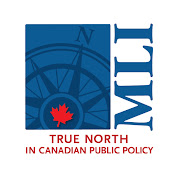How can offshore vessel operators turn their three biggest challenges into opportunities? Three of the main challenges for owners and operators of offshore vessels are:
How can offshore vessel operators turn their three biggest challenges into opportunities? Whether you want to cut emissions and improve efficiency or are dealing with the risks of operating in deeper, more remote waters, this article is a goldmine of useful advice.
Three of the main challenges for owners and operators of offshore vessels are:
1. How to maximise safety and manoeuvrability
2. How to improve efficiency and reduce costs
3. How to decarbonise operations
Let’s look at how to address each of these challenges and in turn make vessels more attractive, profitable and futureproof.
1. How to maximise safety and manoeuvrability
For vessels servicing platforms and rigs in the oil and gas sector or supporting wind farm installation and maintenance, cast-iron safety and excellent manoeuvrability are non-negotiable. Wind turbines are getting bigger and are being built in deeper waters, meaning the vessels used to install and service them face more extreme environmental forces when doing their work. This is driving demand for larger vessels with more complex thruster systems to keep them steady and in position. In this sector vessels require excellent dynamic positioning, so thruster performance is critical to ensuring the safety of both assets and crew. High redundancy is essential for failure cases because of the extreme safety implications and challenging sea conditions. For example, if a vessel were to drift from its position due to a thruster failure, there is a high risk it could collide with the turbine tower.
There are three smart ways to maximise safety and manoeuvrability:
Optimise thruster configuration: The traditional way to improve dynamic positioning (DP) capability is to add more powerful thrusters or increase propeller diameter, but this comes at a cost – increasing the weight and complexity of your vessel. Here are the most important things to bear in mind for your thruster setup:To optimise efficiency, your thruster configuration needs to be optimised for your vessel’s operational profile. Quantifying your precise thruster power requirements early in the design phase will mean you can configure your engines accurately and thereby save fuel.
Thruster configuration is critical in failure cases – even if you lose part of your thruster capability, you still need to maintain position. Thruster configuration is also critical for optimal vessel operation. A properly configured setup will avoid so-called ‘forbidden zones’, with thruster-to-thruster interaction. A well-designed thruster configuration will minimise the negative impact of thruster interaction with structures such as jack-up legs.
Other benefits include greater manoeuvrability, lower weight and CAPEX and a simplified system that’s easier to maintain.
One example of how thruster configuration has been optimised to maximise safety and manoeuvrability can be seen on the Leonardo Da Vinci, one of the most advanced cable layers in the world. The Prysmian Group worked with Wärtsilä to design the thruster arrangement, with retractable thrusters helping the Leonardo Da Vinci to safely carry out deep power cable installations of up to 3,000 metres.
Take advantage of lifecycle services: When you can monitor system performance and identify potential failures before they happen, you reduce the risk of failure. High-quality maintenance support will help keep your vessel running as safely as possible. Predictive maintenance allows for a far more proactive approach, with advice and recommendations from your service partner based on forward-looking predictions rather than historical data. This reduces risk and increases safety.
Invest in cutting-edge safety equipment: For example, a safety guard zone for vessels transiting between turbines, which protects the vessel and wind turbine structure, as well as personnel, by providing an extra pair of ‘eyes’. An example of such a solution is the Wärtsilä Guard Zone, which was the winner of OSJ’s Safety Award 2023. Read the continue of the story by visiting the source bellow.
READ MY ARTICLE https://marine-engineering-news.blogspot.com/2023/04/how-can-offshore-vessel-operators-turn.html
🌟 MARINE ENGINEERING NEWS:
GOOGLE NEWS PAGE OF MARIME ENGINEERING NEWS:
https://news.google.com/publications/CAAqBwgKMKr0zAsw2o_kAw
WEBSITE: https://marine-engineering-news.blogspot.com/
LINKEDIN PAGE OF MARINE ENGINEERING NEWS:
https://www.linkedin.com/company/marine-engineering-news
INSTAGRM: https://www.instagram.com/marineengineeringnews/
FACEBOOK PAGE OF MARINE ENGINEERING NEWS:
https://www.facebook.com/marineengineeringnewsglobal
#marineengineeringnews #chiefengineer #marime #engineering #maritime #merchantmarine #merchant










![Biden administration details how producers of sustainable aviation fuel will get tax credits WPXI [Video]](https://energynewsvideo.com/wp-content/uploads/2024/05/mp_361991_0_QD2KBKXZ2SMIDTU5KICFQINAI4jpg.jpg)
![Danish firm moves state into hydrogen economy [Video]](https://energynewsvideo.com/wp-content/uploads/2024/05/mp_362560_0_663257348690cpreviewjpg.jpg)
![Dominion partners with Stonepeak on wind farm construction [Video]](https://energynewsvideo.com/wp-content/uploads/2024/02/mp_304909_0_65d7b5cfd657cpreviewjpg.jpg)
![Is Your Bank Financing Fossil Fuel Companies? This App Lets You Find Out. [Video]](https://energynewsvideo.com/wp-content/uploads/2024/04/mp_360428_0_WDHTjpg.jpg)
